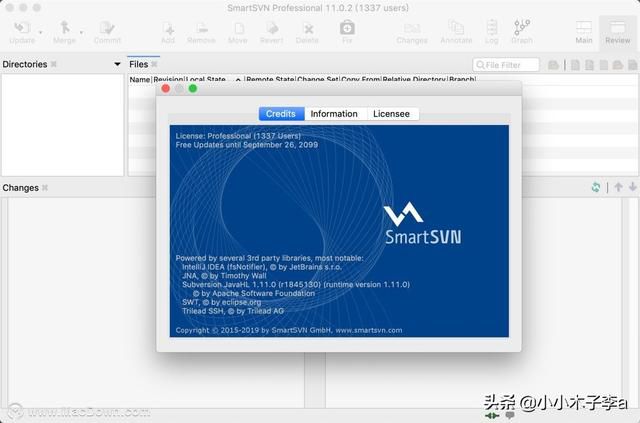
If everything went ok, you should see the new server name in the Transactions pane, with everything else exactly as it was with the old server. Only change the IP-address or host-name into the new IP-address or host-name, click Relocate and wait a while. To point your working copies to the repositories on the new server, simply open a working copy and choose the following menu-item:

To maintain working copies and repositories, I use SmartSVN, IMHO the best tool out there for SVN.ħ. On my CentOS server, I had to specifically open the port for svnserve in the firewall. $ echo "svnserve -d -r /var/svn" > /etc/rc.local For Linux (CentOS in my case) you can simple add the following statement to the file /etc/rc.local: $ launchctl load /Library/LaunchDaemons/.plist
#WINDOWS SMARTSVN INSTALL#
Then edit the file and change the values, prior to loading it into launchctl.Īnyway, I zipped the plist-file and you can download and install it right away in /Library/LaunchDaemons/ (download: .plist)Īfter you installed it, and you made your changes (for example change /Users into /var), execute the following command to add the script to launchctl:

#WINDOWS SMARTSVN ZIP#
To get an exact copy onto the new server, zip all repositories at once. At the prompt ($), execute the following commands:įor example, my repositories on MacOS X reside under /Users/svn/, so I do $ cd /users. If you use VNC, start a Terminal application on the remote server to get a command prompt.Ģb. If you cannot log in as root, log in as an administrator and you probably have to use ' sudo' before every command you execute to get the right permissions.Ģa. If you may only access your new server via an SSH-tunnel, just use the SSH-command line. I do not know if these applications support VNC over SSH. For VNC sessions, you can use Chicken of the VNC or Apple Remote Desktop. Start either an SSH or VNC session to your old server.


 0 kommentar(er)
0 kommentar(er)
